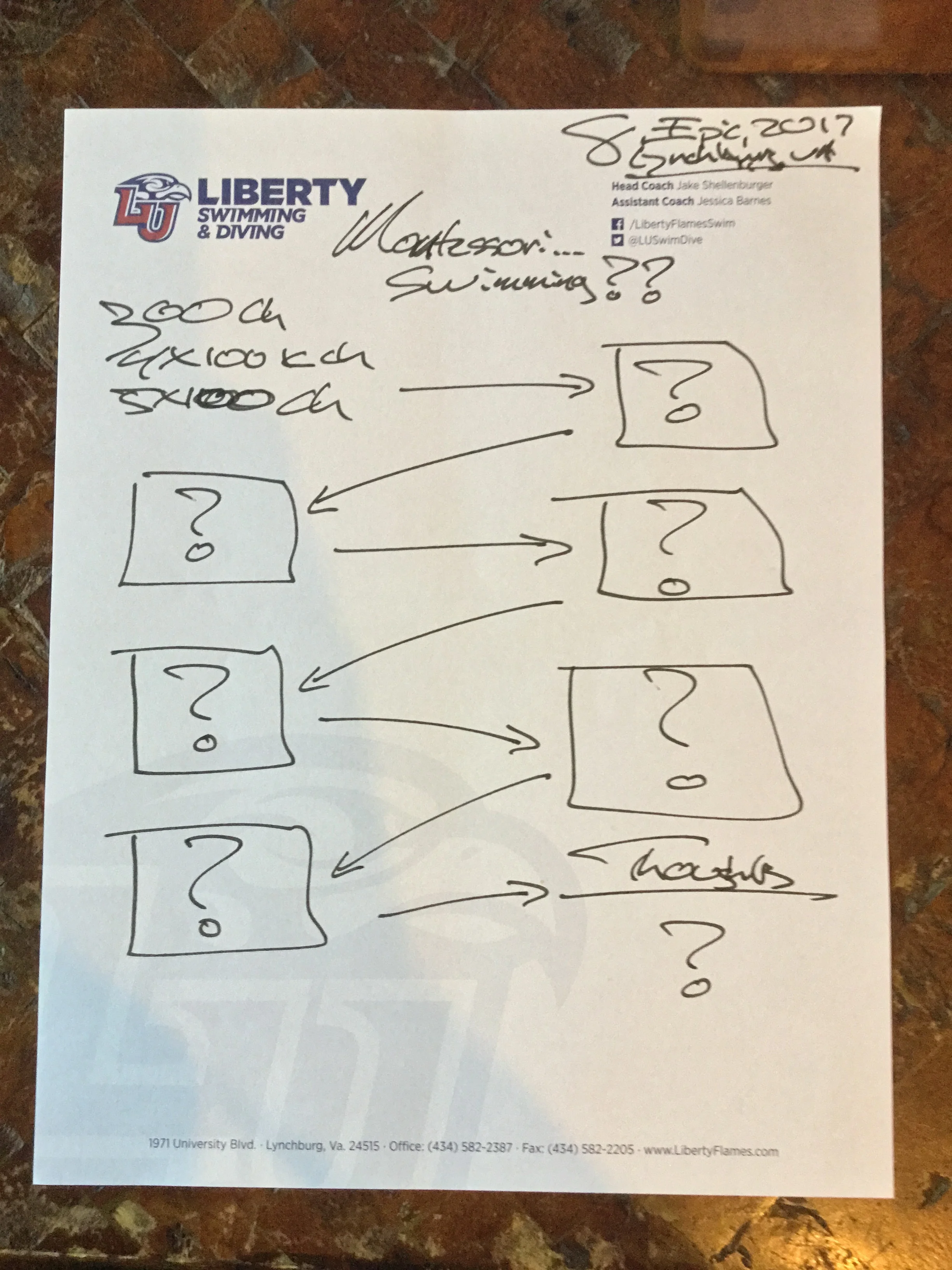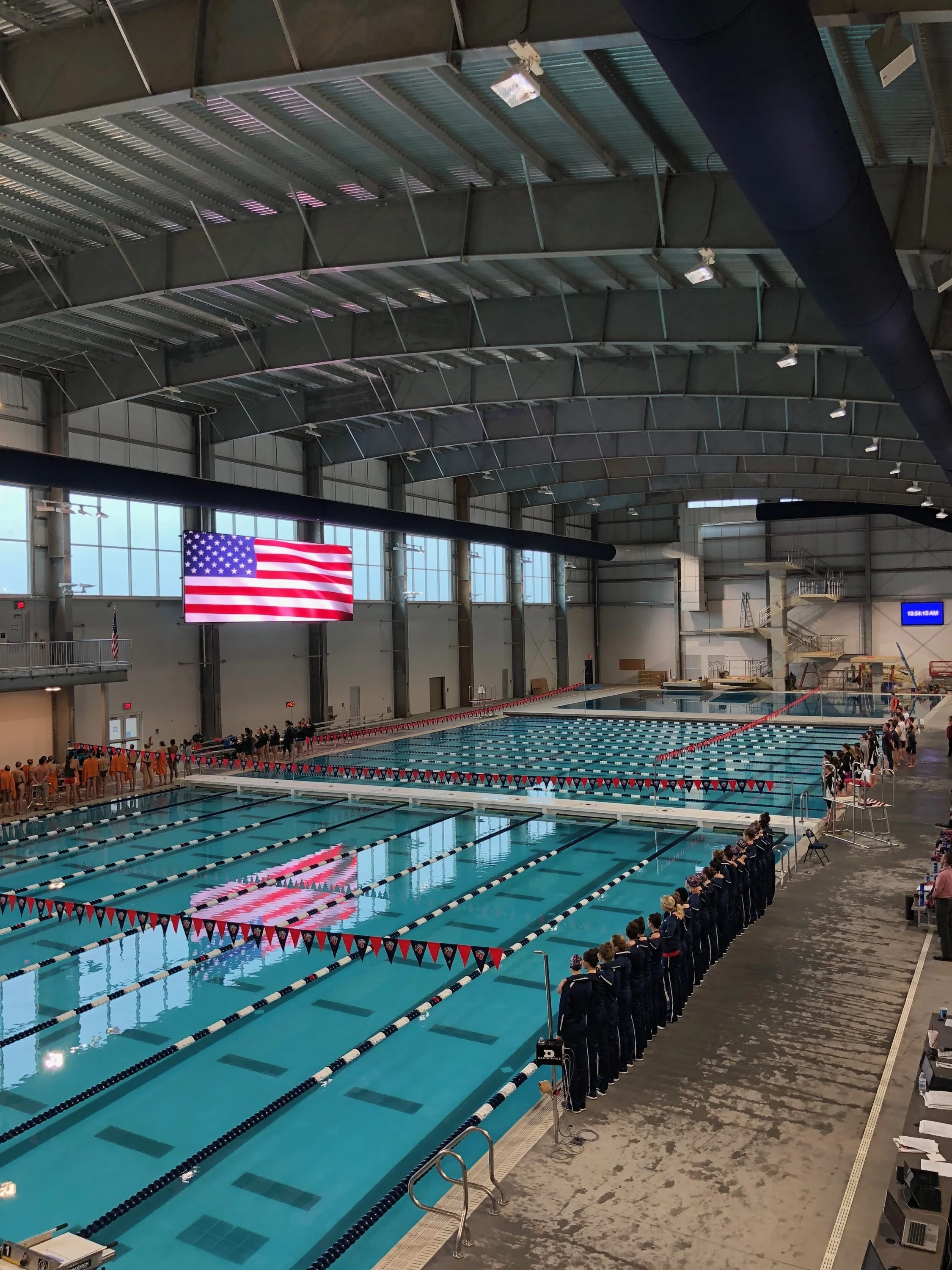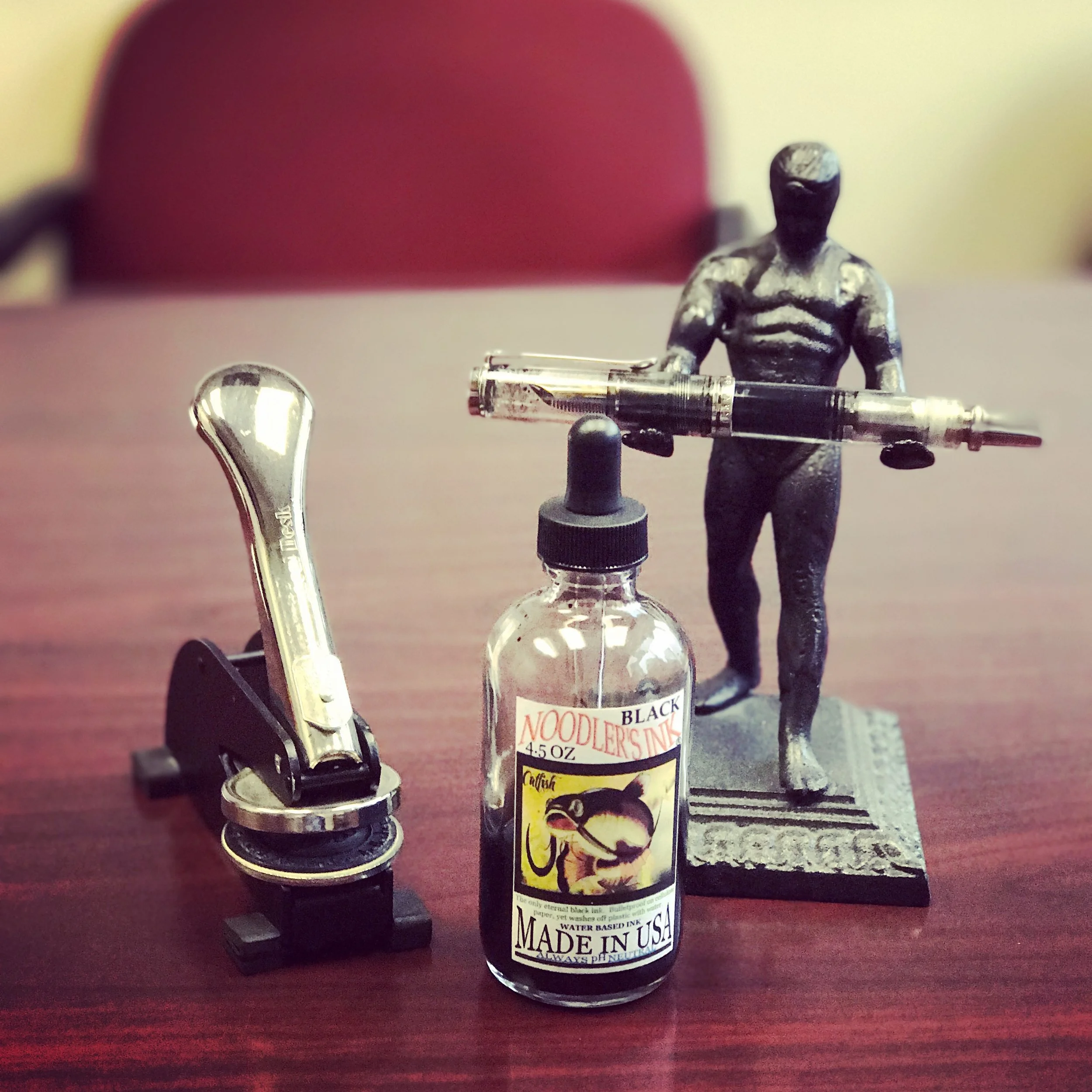The Best Ways to Implement Montessori Education in Swimming
“The teachers are in the pool.”
- Rick DeMont, 2007
Charter, public, home, boarding, private, unschooling, etc., and the list of educational philosophies, beliefs, and opportunities goes on and on. Everyone is an expert, and everyone is adamant about the fact (yes, the fact, it’s true of course) that their way of educating is best. The science is on their side, they say.
Education debates aside, if your program were a school, a model of education, how would you describe said program? How would your athletes describe your program? I believe the previous two questions a beneficial thought experiment, and one in which I engage quite often. While training for sport and exercise physiology is obviously different than training cognitive abilities, I am of the belief that we can improve upon both with a bit of divergent thinking and “adjacent possible” examination.
In two specific examples:
Can we improve learning by incorporating standing desks into classrooms?
Can we improve a swim practice by allowing for self-directed learning, play, and exploration?
I believe the answer is yes to both, and today I share with you an example of the latter, a Liberty University sprint group power workout, performed on November 8th, 2017. It was yesterday’s workout as I write this article, but for the sake of “evergreen content,” let me provide some context and speak in more general terms:
As swim coaches and athletes know, November is a tough month.
The novelty of the new year has worn off a bit (or completely).
The academic load increases, and training is in full swing.
Thanksgiving break is coming, eventually, but not yet.
We know Christmas break is out there, out there, somewhere...
Conference? Yes, but that’s next year.
The weather changes, clocks turn back, and darkness at 5:00 PM makes for a challenge in regards to motivation and training.
Added together, November is often thought to be a grind, indeed, and the month is known to those in the sport to break athletes, both physically and emotionally. How then do we as coaches continue to push on and inspire hard work from our athletes, while also remaining sympathetic to the realities of our sport? Perception, as they say, is reality, and the perception of November for many of our athletes (whether we agree or not) is “grind and get through.”
One of my remedies, and one that works quite well, is the concept of a self-directed practice, unswimming or Montessori swimming if you will, and I incorporate a variation of this educational model into our training plan every November. We do not prescribe this often, but it is a nice change of pace, and when timed perfectly, is an immense benefit to our student-athletes.
The workout, as written on the actual practice:
Now as mentioned, this was a power workout, thus there were a few guidelines. This was not what we would consider an “on the house” style workout, where anything goes, although that style of workout is another great November prescription. The requirements:
Practice ends at 7:30 AM (we started at 6:00).
Greater than or equal to 30 Max Blast, all-out efforts.
Each effort must be greater than or equal to 12.5 yards.
And that was it. They were free to kick, swim, scull, use Power Towers, weight belts, Drag Sox, parachutes, ankle weights, cords, etc., or no power attachments whatsoever. We have myriad toys at our disposal here at Liberty; any and everything was fair game for this workout.
The results were fantastic, for lack of a better term, and the practice was a physiological success. The sprinters worked hard, they were creative, and they made themselves into better athletes. Perhaps more importantly, given the realities of November, the workout was a success from an emotional and overall psychological standpoint, and that may be the more important of the two benefits. As an additional benefit for me, I was able to learn from our women, and I picked up two new specific power “drills” they invented that I will use in future workouts.
Three thoughts to consider if you want to incorporate a similar workout into your training plan:
You have to trust your people.
We have a great group here at Liberty, and the overwhelming majority are sincerely dedicated and committed to becoming better athletes. While sprint groups tend to have a reputation for laziness and indifference in the swimming world, I had no fears whatsoever prescribing a self-directed workout to our sprint group here at LU. If you have great people who want to get better, you can trust them to use a self-directed opportunity to improve.
You have to time it well.
While this type of workout is beneficial at any point in the year, I believe it provides the most benefit during the hardest emotional/psychological stretches of training. November, Christmas break, and spring training are three specific periods we look to use this style and other variations.
Novelty is a powerful motivator.
There is a point of diminishing returns in regards to this style of training, and most coaches know instinctively that while this is good, it would lose its efficacy if prescribed too often.
I would love to hear your feedback if you give this style of workout a try. If you have people who want to improve, they will do so in a self-directed workout, and you will learn a thing or two along the way. As Rick said, the teachers are in the pool, and it is a pleasure to watch passionate student-athletes go about their craft.
As always, thank you for reading, and Train Fast!



